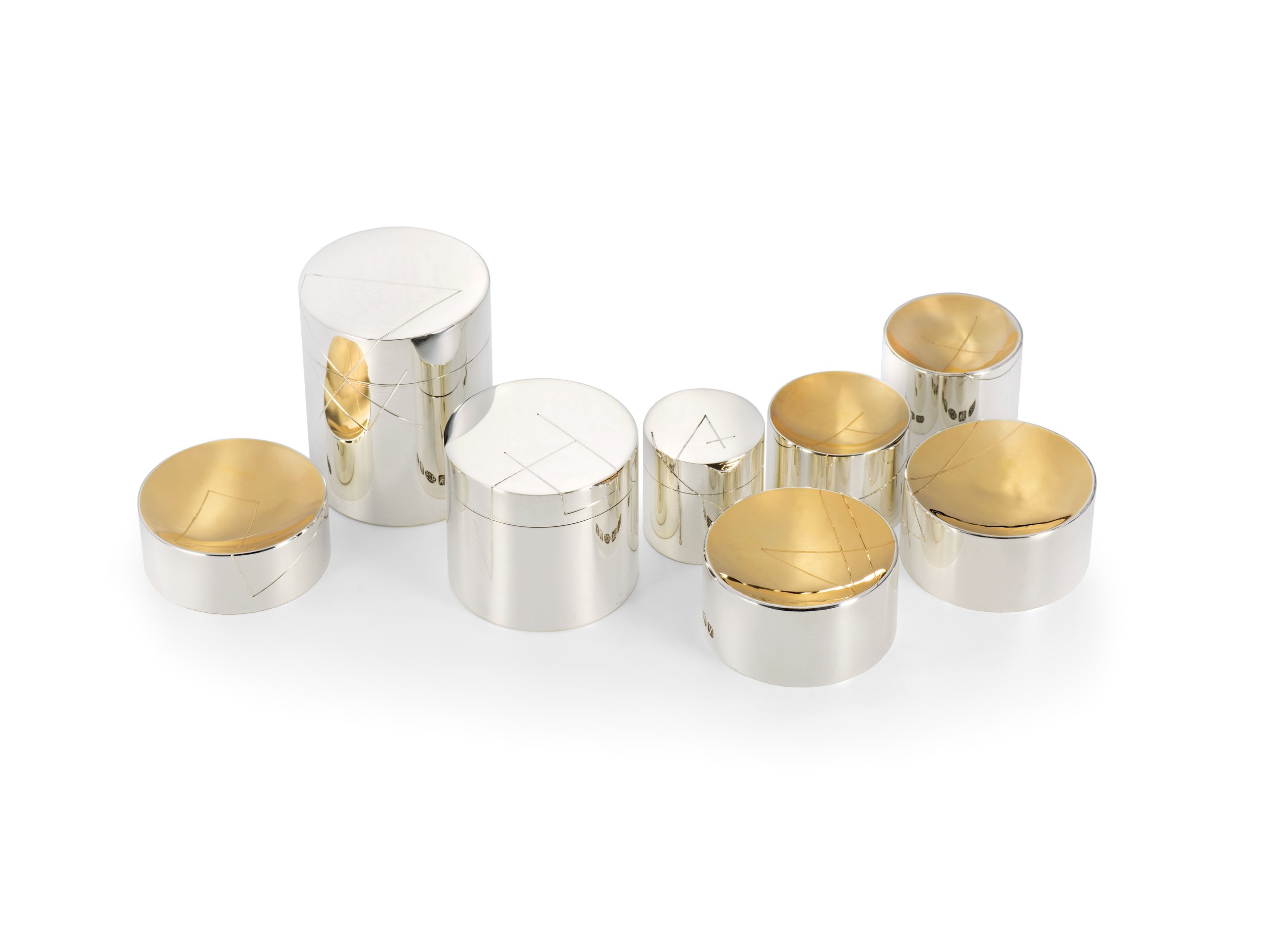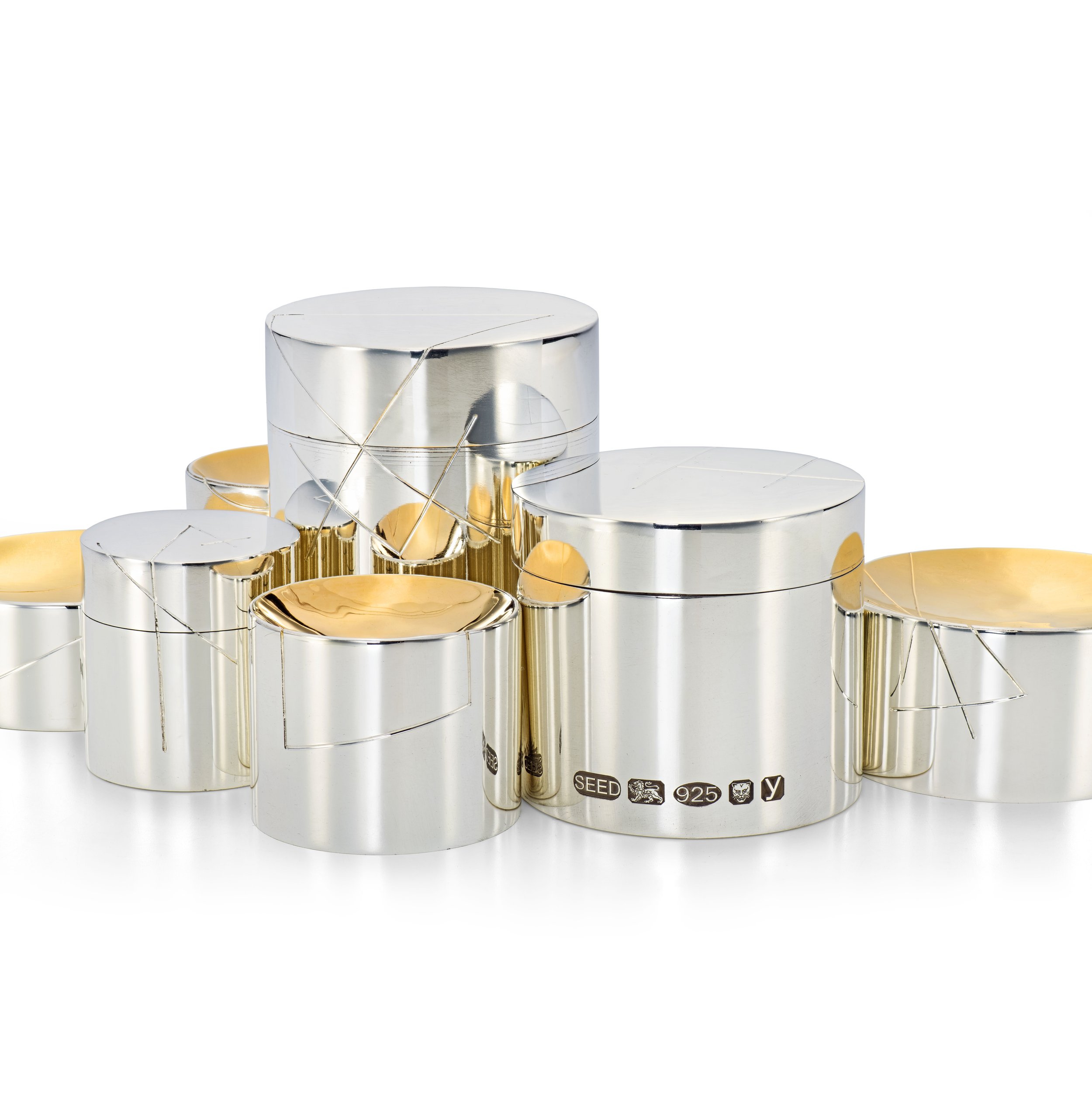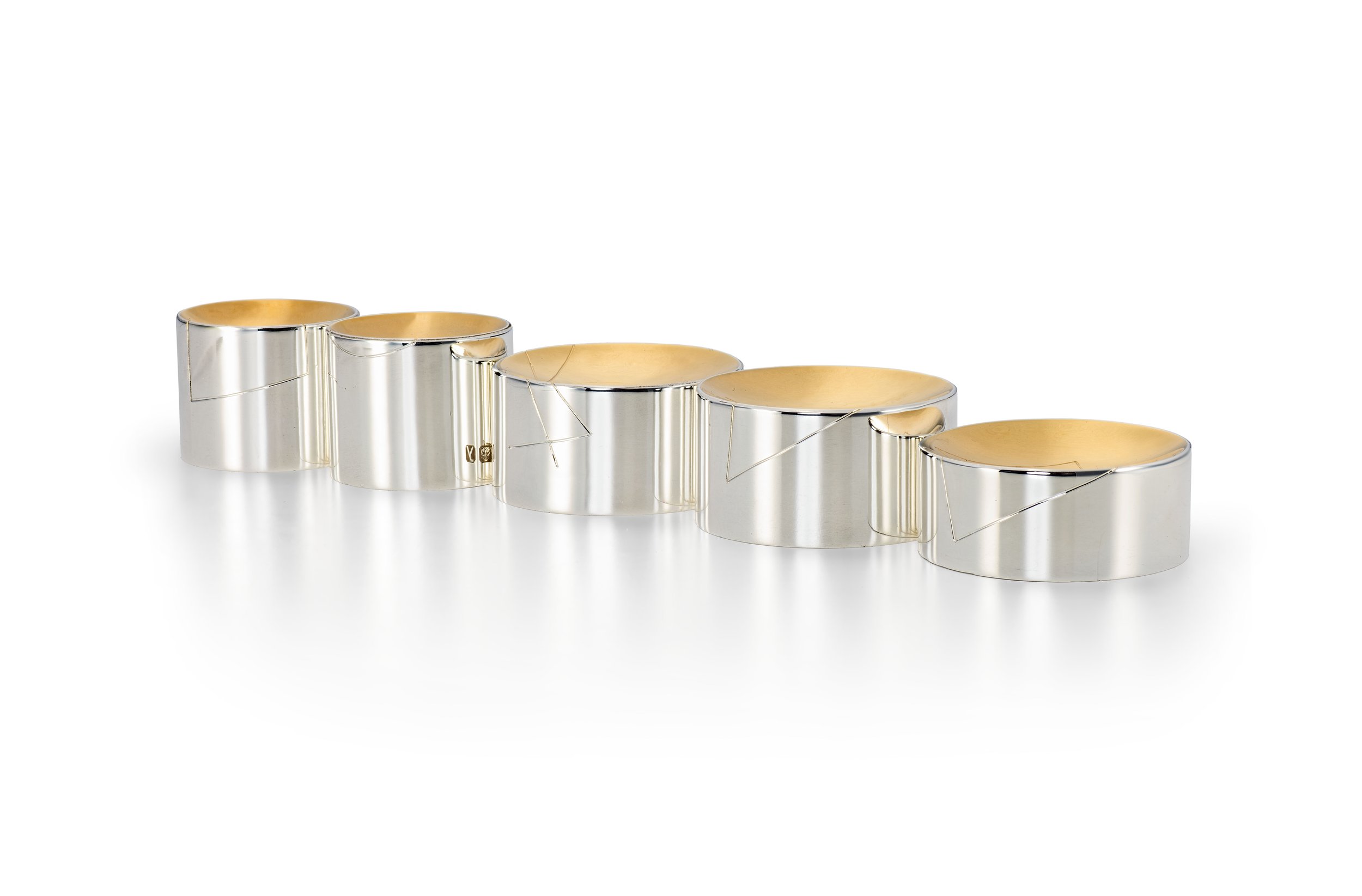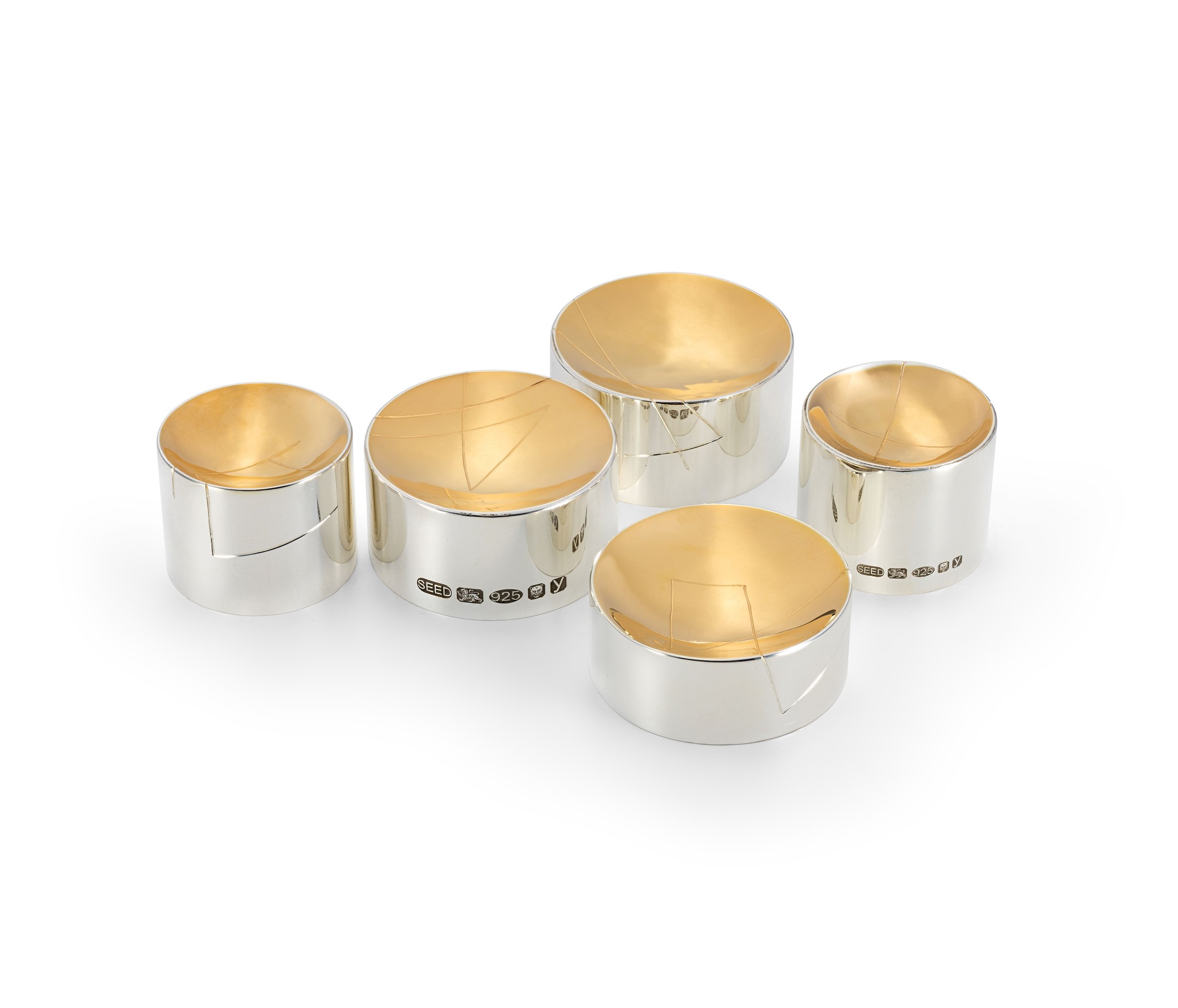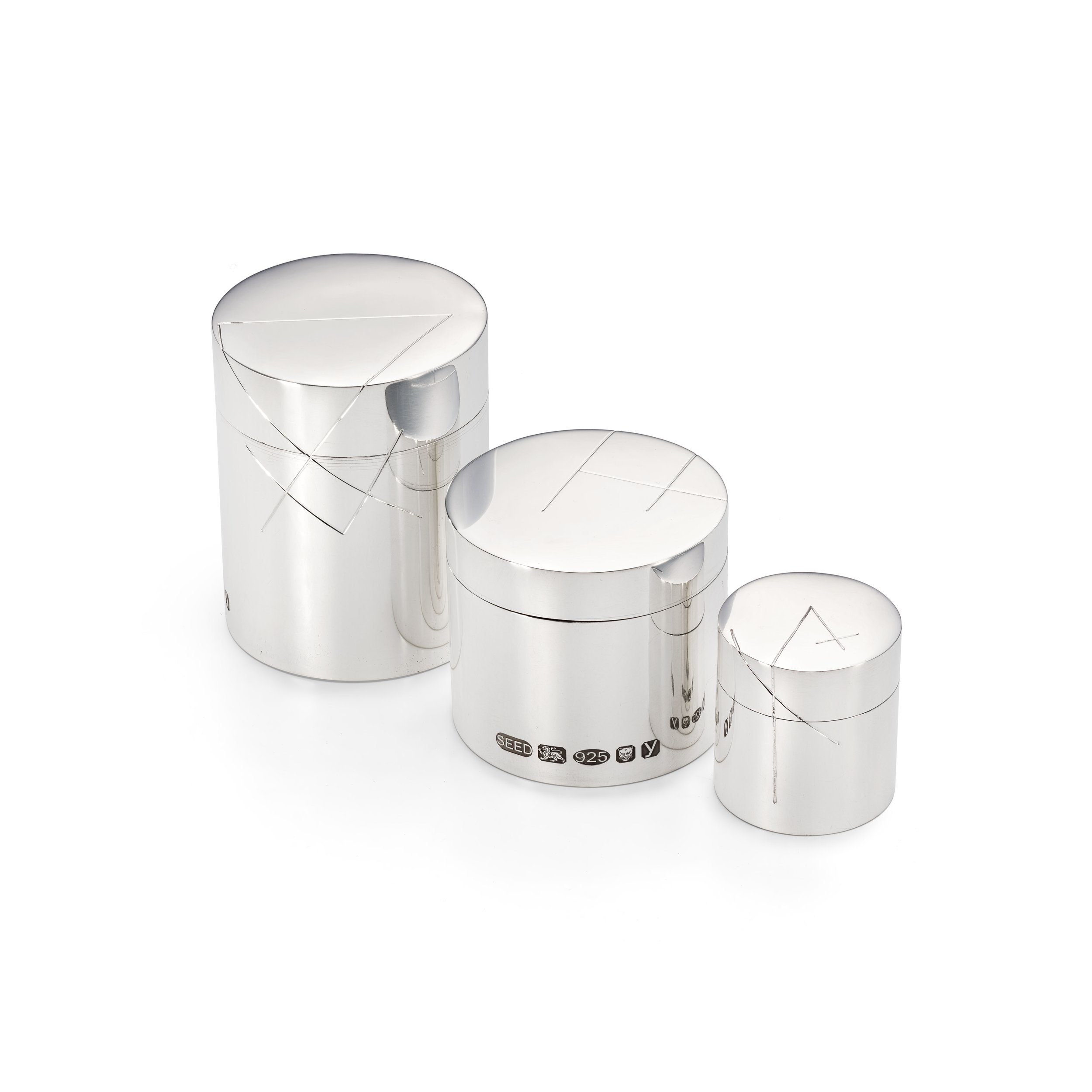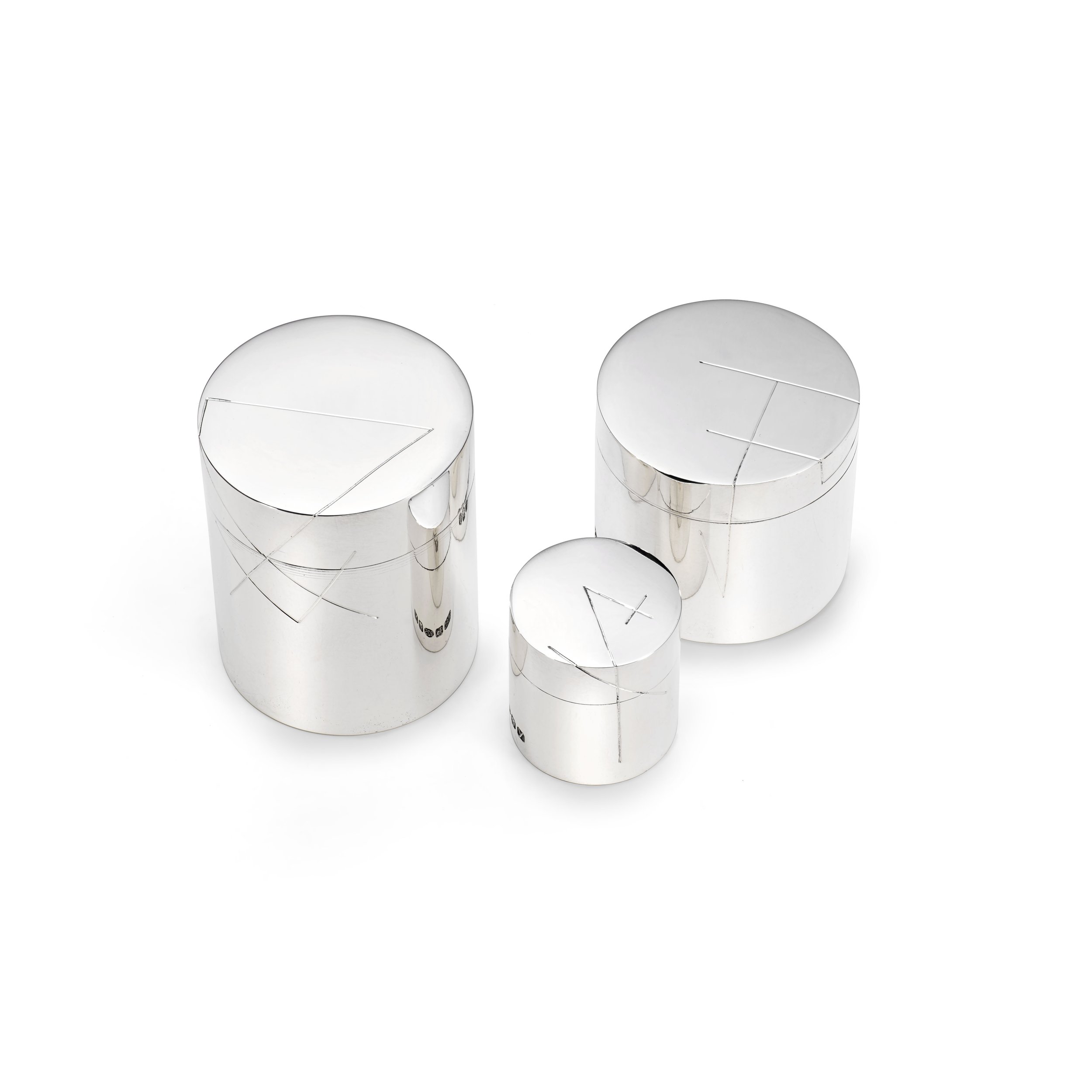Merchants Marks Collaboration
I saw a project called @merchantsmarks.norwich on instagram, researched and run by Darren Leader Studio and was fascinated by these geometric forms. Some more elaborate than others, some very minimal in their form. While they are hundreds of years old they look so modern and current.
Merchants marks were essentially the tag of merchant traders and artisans from 14th - 16th century, a way of signing their work before the masses could read and write.
I’ve taken a handful of these marks and used them to boldly adorn some silver boxes and pinch pots. Much like an engraved gin beaker I made a few years ago rather than placing the marks solely on the lid or the side, I’ve draped them across both. I just love these designs; I started thinking I would choose those which meant most to Norwich and it’s history for example weavers, dyers, a goldsmith but actually in the end I thought scrap that, go with the ones I am initially drawn to. And not all of those were Norwich ones, and they are all different trades.
They were VERY popular at Wisley during the show with many people saying they’d never seen anything like it. I proudly showed them a copy of one of Darren’s books to show further marks. I have loved using these in my work and will definitely be developing the collection more in the near future, they lend themselves perfectly to my aesthetic.
In silversmithing and jewellery we have our sponsors/makers mark, which is unique to each maker and registered y an assay office. It is impressed into our work so it can always be traced back to us, by the assay office who only strike the marks onto the metal as part of a hallmark which guarantees the quality of the gold and silver used.
Volltner Engersz, Merchant 1598 Oxford During the eighteenth and nineteenth centuries a great deal of painted glass was brought from Europe to this country. Most of it is Swiss or German. Sonem of these have merchant marks painted upon them and occasionally an inscription which identifies the owners of the marks. A collection of nine German or Flemish merchant marks is preserved in the large window of the Library of Merton College, Oxford. All are dated 1598.
William Henuton Merchant, Norwich 1390 tall box Willian Henuton’s city location and profession are unknown, although the characteristics of his logo device seem reminiscent of a stone mason’s march. However its individual design achieves the requirements of a distinctive merchants mark created with a limited number of strokes and easily identified from other craftsmen or traders.
Jeremy Poticary, Clothier, 1596 Stockton, Wiltshire medium box The logo device of Jerome Poticary is a stylish monogram, that appears to be composed of redacted geometric lin, a method widely used furing the late middle ages.
Poticary was regarded as a “very eminent clothier”. A medienve clothier organised the production and sale of cloth, visited towns and fairs, and negotiated with merchanges for wider distribution.
John Wryght, Alderman, Norwich 1424 small box The logo device of John Wryght is notable in its simplicity and stands out from other more elaborate designs. Its upright stem and top diagonal line could indicate a development of a Rube symbol, but rendered differently here with the peculiar addition of a downward cross.
A medieval Alderman was a high ranking member of local government or merchants guild.
Peter Vischer, Sculptor, c1500 Nuremberg deep pinch pot Peter Vischer established the Vicsher bronze foundry, and was renowned for producing monumental brass work and bronze work. His logo device or signature sign appears to depict two triangles, slanted diagonally. Conversely, it could also be seen as a striking composition of the Sign of Four.
Richard Clement, Tanner, Norwich 1517 narrow pinch pot A medieval tanner processed animal skins to create leather. It was noted to be a noxious profession and premises were probably located on the outskirts of the city.
Robert Asgar, Adlerman , St Lawrence, Norwich 1424 deep pinch pot
Richard Evense, Fuller, 1586, narrow pinch pot The logo device of Richard Evense is a curious design of a cross with its lower right quarter completed by a curved line, indicating a knocked-out circular symbol.
The mark was originally collected and drawn by Edward Elmhurst in 1959. Elmhurst was interested in the possibility of a registry of marks and referenced an example in Norwich, 1459 woolen weavers were obliged to supply a roll of the names of the men and their craft, with the token of each man”.
A medieval fuller worked in the production of cloth and cleansed freshly shorn wool.
All items made in recycled silver by me, polished by me, hand engraved by @thecambridgeshirehandengraver and gold plated by Steve Woods. Photo credit as usual is @paulmounseyphotography

